Looking for something unique to spice up your shade garden? As an avid shade gardener myself, I’ve grown well over a thousand different kinds of plants. In today’s blog, I’m sharing five of my favorite perennials and shrubs you might not have tried yet. Maybe they will become some of your favorites, too!
Where sunlight is sparse in the shade garden, plants with silver foliage like heartleaf brunnera shine extra bright. Its broad, heart-shaped leaves pair beautifully with plants that have smaller or finer textured foliage like ferns, miniature hostas, sedges and golden hakone grass. I sprinkle brunneras all around my shade garden, anywhere I need to lighten things up a bit.
Most of the year, you’ll grow it for its amazing foliage. As an added bonus, sprays of tiny, beautiful baby blue, forget-me-not-like flowers appear abundantly in spring right around the time the tulips bloom. Expect it to form a full mound of foliage about 12” tall, with flowers on taller stems above the leaves.
Many plants with silver leaves are more accustomed to hot, dry climates, but not brunnera. It prefers partial to full shade conditions and rich, moist soil that drains well. Constantly soggy soil can lead to disease. It is hardy in zones 3-8 and is deer resistant. Other than removing the spent flower stems when they are done blooming, it doesn’t require any further maintenance all season.
Fair warning: once you start growing Lenten roses, you’re going to want more every year. This amazing perennial has so much going for it! It’s an absolute essential in my shade garden and might become one in yours, too.
Lenten roses are one of the first plants to bloom in spring, right around the time when the spring flowering trees and bulbs are in their prime. They send up a bouquet of flowers from the center of the plant before the new leaves emerge, so there’s nothing to obstruct your view or that of the bumblebees that pollinate the flowers.
After 6-8 weeks once the flowers are spent, new leaves will fill in to make a full 12-18” tall mound. It creates a beautiful, deep green backdrop for later blooming perennials. The leaves are very thick and leathery, persisting through winter in most climates. In spring, just before or as the flowers emerge, trim off any of last year’s leaves that are tattered.
Lenten roses grow best in partial to full shade and prefer rich, moist soil in zones 4-9. Once they are established, they will tolerate slightly drier soils. They are deer and rabbit resistant.
Every fall when this shrub is in its glory, with purple pearl-like berries lining its stems from top to bottom, people are absolutely amazed. Though some species of beautyberry are native and fairly common in open woods and fields across the U.S., it isn’t planted in gardens nearly enough.
Pearl Glam® is a 4-5ft tall, upright shrub with arching stems; its shape is best when left unpruned. Pearl Glam® has a slight purple tint to its foliage which complements the pink flowers that appear in mid to late summer. Bright purple berries form in place of the flowers and persist into fall, or until birds snap them all up. Its berried branches are beautiful in fresh bouquets.
Grow this plant in part shade to full sun in zones 5-8. It isn’t too fussy about soil moisture and can survive most conditions once it is established. It is a fast grower and is generally considered to be deer resistant.
Summersweet is the perfect complement to purple beautyberry in the landscape, as it shares similar cultural preferences and blooms around the same time. Summersweet has very fragrant, white, bottlebrush-shaped blossoms that attract bees, butterflies and hummingbirds in mid to late summer. Though pollinators love this plant, deer and rabbits do not.
Its white flowers and deep green, glossy foliage would look fabulous underplanted with silver leafed heartleaf brunnera and Endless™ browallia in part shade and moist soil. This combination would be especially good in your garden if you have deer, since all three plants are deer resistant.
This is a native shrub with an upright form that varies in height from 2-6ft, so be sure to check the label before you buy to find the particular cultivar that will fit your space. Its dense, upright shape makes it perfect for foundation plantings or short hedges in full sun to part shade. Its hardiness ranges a bit by cultivar, from zone 4 to 5.
This interesting perennial is among our nation’s most beautiful wildflowers. Native to much of the southeastern U.S. in zones 5 through 9, you’ll find the native species, Spigelia marilandica, growing in moist woodlands and along the woods’ edge. Though it needs afternoon shade in warmer climates, it can also tolerate mostly sunny conditions in the North if the soil is moist enough.
‘Little Redhead’ grows denser, has a more upright habit and stays a bit shorter than the species, usually topping out around 24-28” tall. It is one of few shade perennials that is pollinated by hummingbirds. One look at those tubular, red flowers with the yellow throat and it’s easy to see how they were designed specifically to attract this specific pollinator. They bloom from late spring into midsummer atop the clump of upright, deep green foliage and can be cut to enjoy in fresh bouquets. It’s a great plant for shade gardens.
I love growing coral bells in my shade garden for their brightly colored foliage, and ‘Cutting Edge’ foamflower is a perfect evergreen complement to them. Its leaf shape reminds me of emerald green snowflakes, each marked with a deep burgundy purple splotch in the center. A cloud of dainty white, bottlebrush-shaped blooms appears above the foliage early in the growing season and draws small, native, pollinating bees. Fortunately, deer will often pass foamflowers on by for something tastier.
‘Cutting Edge’ will grow beautifully all by itself in a container on your shaded porch or patio, or you could pair it with coleus and begonias or impatiens for an extra splash of color. In the landscape, it forms an 8-10” mound tall mound of foliage, so it’s best suited to the front of the border backed by taller hostas, ferns or hydrangeas. In zones 4-9, find a spot in partial to full shade where moisture is adequate, and watch it thrive for years to come.
Many of the shade loving plants we’ve talked about so far have broad leaves, and that’s no accident. If you ever visit a rainforest, you’ll notice that many of the understory plants (those that grow in the shade of large trees) have broad leaves, too. The greater surface area allows the leaves to absorb every bit of available sunlight, which then turns into energy for the plant by way of photosynthesis. The same principle works on a smaller scale in your shade garden at home.
Garden design principles tell us to pair plants with fine texture, like ferns and Jacob’s ladder, with others that have coarse texture. Broad-leaved plants have coarse texture. So it’s easy to see how ‘Golden Feathers’ and ‘Heaven Scent’ Jacob’s ladder will bring beautiful contrasting texture to your shade garden.
These fantastic foliage plants will also treat you with pretty purple-blue flowers that pollinating bees enjoy in the springtime. Once spent, trim them off so the plant will put its energy into forming a fuller clump of ferny foliage.
‘Golden Feathers’ is hardy in zones 5-9 and prefers partial to full shade. ‘Heaven Scent’ is hardy in zones 3-7 and will grow in full sun to partial shade. Both are deer resistant.
One of the first perennials to draw bumblebees back into my shade garden each spring is lungwort. It blooms before the trees get their leaves, so there’s plenty of sunshine available then to fuel the production of flowers. Tiny pink buds open to reveal blue or purple flowers clustered tightly in little bundles above the mounded foliage.
The easy care nature of lungwort and its interesting foliage are what makes me want to plant more in my shade garden. As a bonus, deer or rabbits don’t typically find its fuzzy foliage very palatable. There are a number of cultivars available, and what distinguishes each is the size of their leaves and the amount of silver speckling. Newer cultivars like those we offer are more resistant to powdery mildew, are stronger growers and tend to be more floriferous than older ones. All are hardy in zones 3-9 and grow best in partial to full shade and fertile, moist soil.
Shade tolerant evergreens can be tough to come by since most conifers need lots of sun to thrive. Microbiota, commonly called Siberian cypress, is an exception in several ways. It grows beautifully in part shade (4 to 6 hours of morning sun) and unlike many evergreens, it is deer resistant. You might mistake it for a juniper since the foliage looks similar, but Microbiota is softer to the touch and is more shade tolerant.
‘Celtic Pride’ is the preferred cultivar of Siberian cypress because of its excellent disease resistance and attractive russet orange winter color. It is one of the most cold hardy plants we offer, surviving as far north as zone 2 (hence, the reference to Siberia in its common name) and is heat tolerant through zone 7. It has a prostrate habit, maturing to 1-3’ tall and 5-6’ wide.
To really make a bold focal point in your perennial garden, you’ll need at least one ligularia. Depending on which cultivar you choose, it could easily take up as much space as a large hosta, though its habit is more upright, and it tops out around 30-48” tall. I love pairing it with finely textured sedge and Japanese anemones in my garden in part shade.
Ligularia’s foliage is its main attraction, bearing deep green or dark purple leaves which each grow larger than your hand. Their leathery texture makes them less favorable to deer. Some ligularias produce orange-gold, daisy-shape flowers and others produce true yellow spikey flowers in the summertime.
Both types are attractive to bees and butterflies. The bees blend in so well with the yellow blooms, you’ll have to look carefully to see them routing about, collecting pollen as they go.
You’ll see more blooms if you plant ligularia in partial shade, but take care to site it in morning sun since warm afternoon sun can cause the foliage to droop until shade returns. This is a moisture-loving perennial that thrives in moist or even boggy soil in zones 4-9.
Want to explore more plants for shade? Follow this link to find annuals, perennials and shrubs that will thrive in your shade garden.

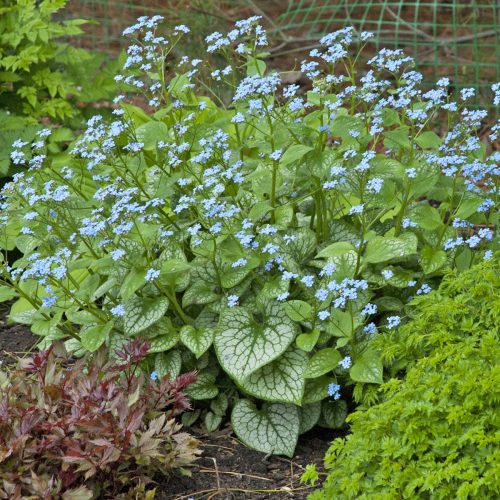
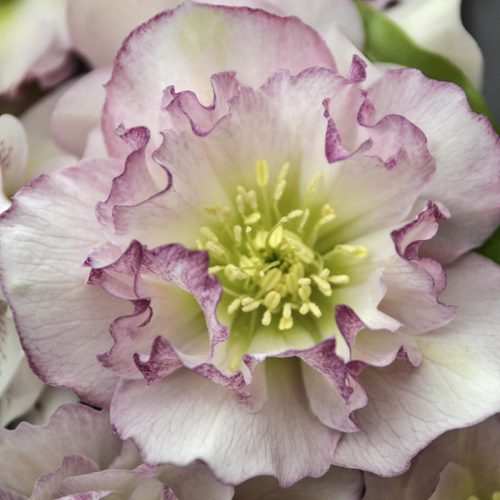
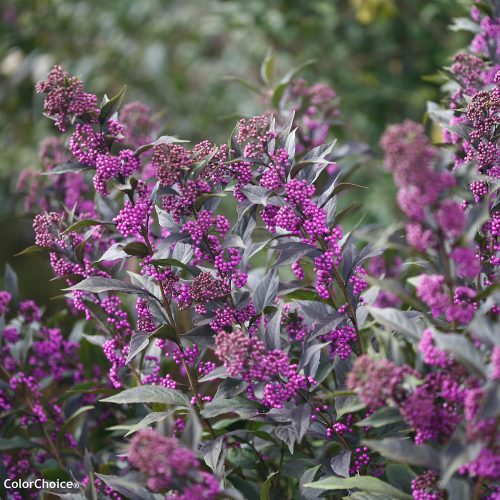
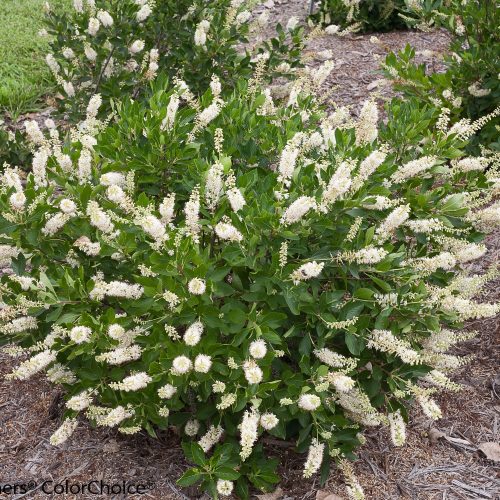
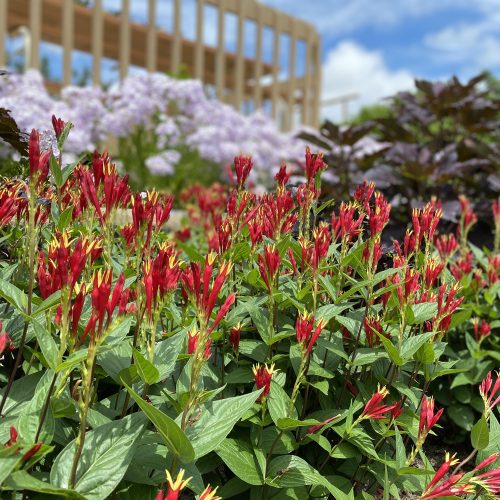
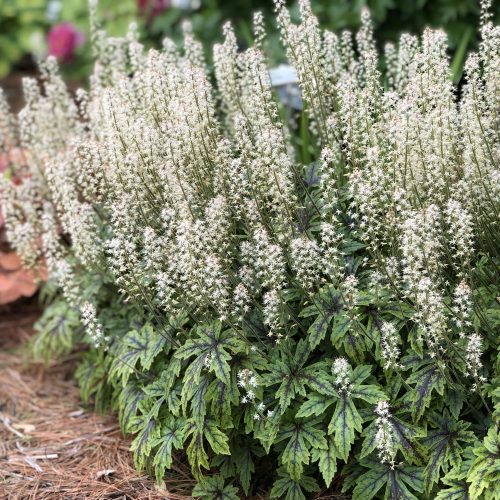
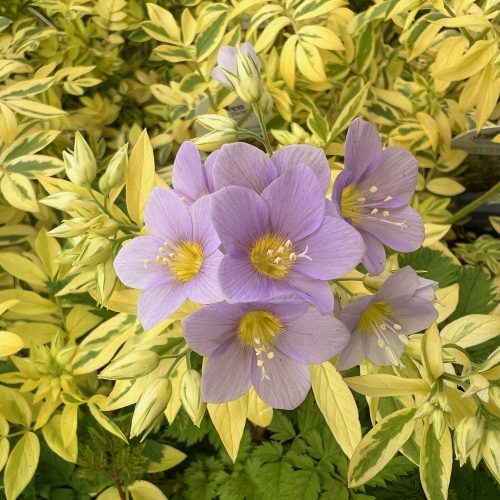
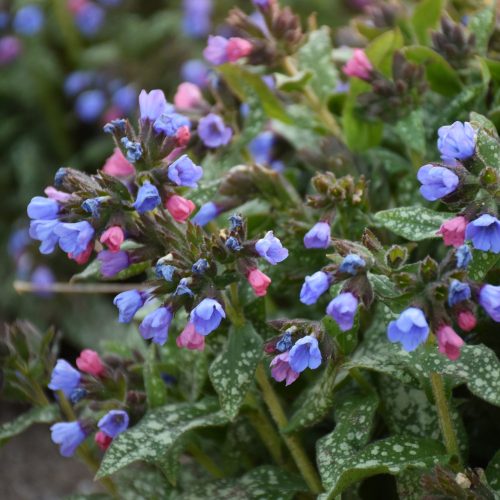
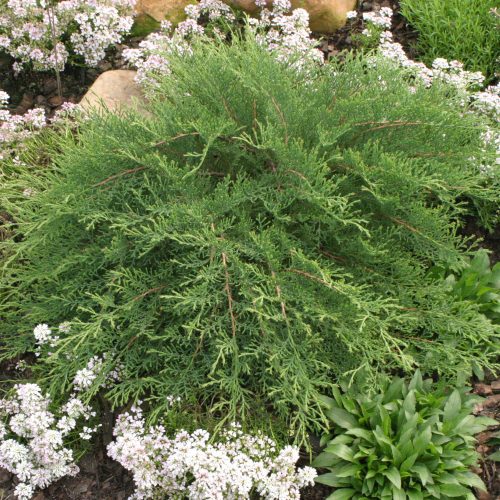
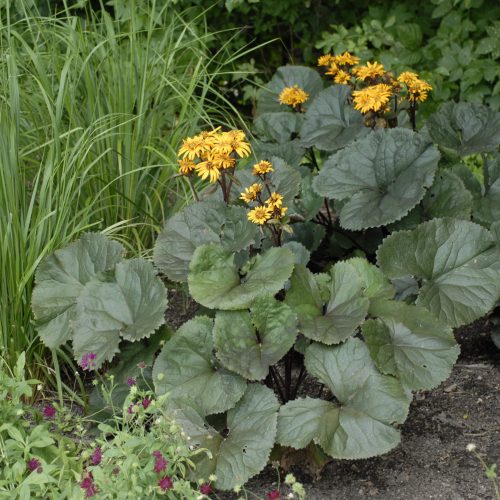
3 thoughts on “Ten Unique Plants for Shade Gardens”
Thank you Heidi! So many great suggestions for my shady garden. My shopping list just got a little longer 🙂
We live in 7b Georgia. Lots of red clay soil and rock. We are surrounded by trees on every side, but I have a really difficult time planting in the ground because the tree roots seem to come up everywhere. I think I’m stuck with containers. Arranging them is an ongoing challenge. Love calicarpa. And so many perennials do really well in containers.
Thank you for the information on plants for shade. I am in constant search for additions to my landscape shaded by three mature oak trees. Challenging but when I find a “win” I am thrilled.